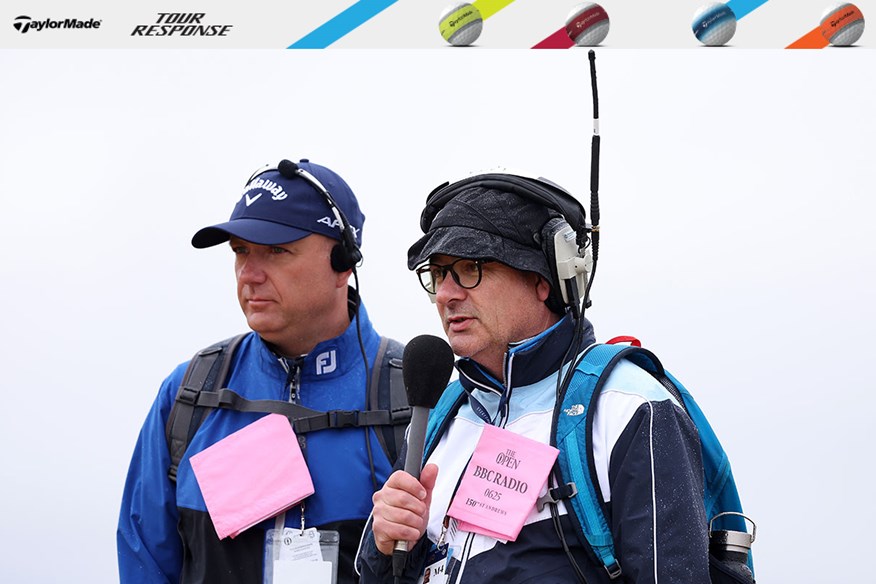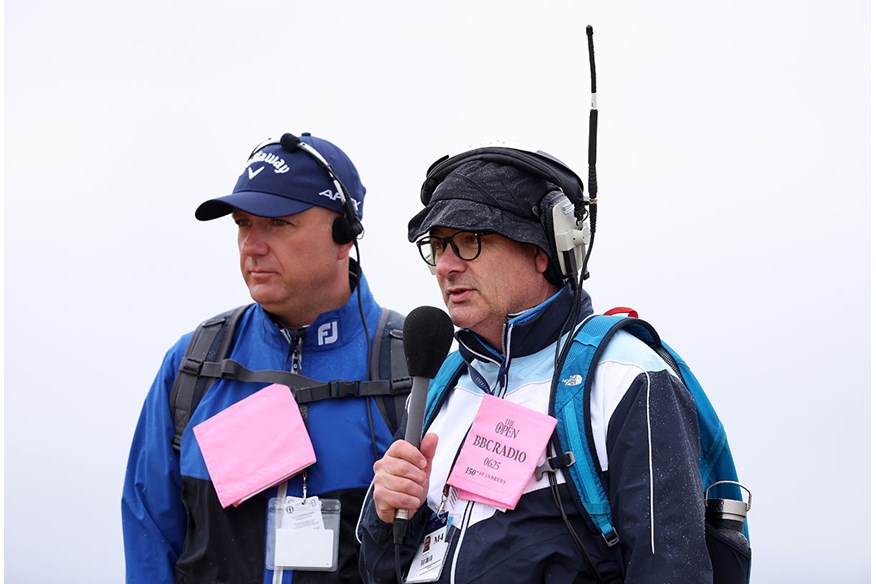Behind the Scenes at The Open with BBC Radio 5 Live
Last updated:
We spent a day with the BBC 5 Live team at the 150th Open to find out how they piece together the live action from portakabins at St Andrews and a studio in Salford.
Today’s Golfer’s 2023 Major coverage is brought to you in association with TaylorMade.
It’s Friday of the 150th Open Championship at St Andrews and there’s already a buzz in and around the grandstands. Thousands are following Tiger’s group, but everything is happening ahead of him. Every five minutes a new name pops up on the first page of the leaderboard. It’s difficult to keep up as a fan, but even harder for the people working behind the scenes at the BBC.
Tucked into the rear of one of the hospitality tents, 80 yards or so from the first tee, are a collection of scruffy cabins which have been converted into makeshift studios for the Radio 5 Live team. We have been granted unfiltered access to the production crew and personalities to find out what it takes to produce live coverage at The Open Championship.
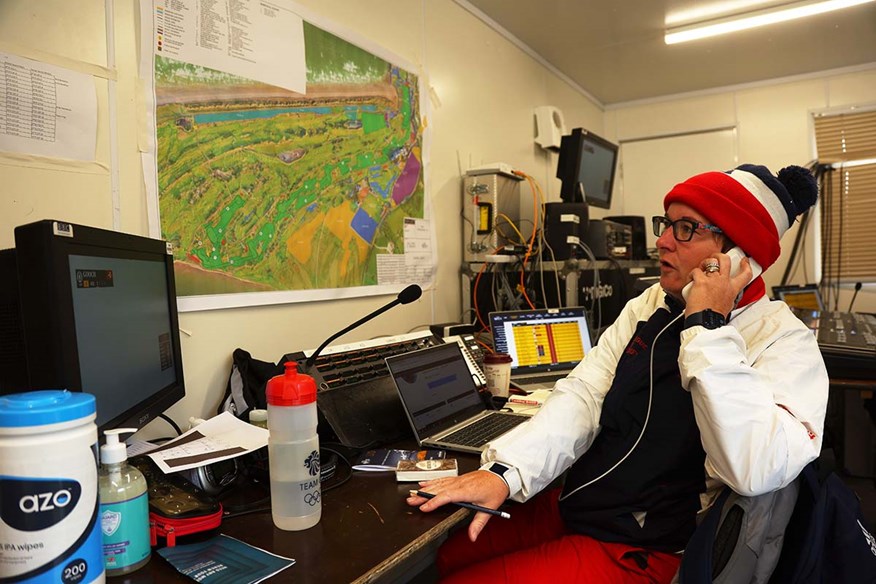
It all starts with Pam Melbourne (pictured above), Assistant Editor for Major Events at BBC Radio, who has covered World Cups, Olympics and just about every major sporting event you can think of. She is coordinating their golf coverage on the ground, but cost savings and a greater commitment to sustainable working practices mean seven of their production crew are mixing the live feed from Media City in Salford. Lead Producer Clare O’Donoughue is the one calling the shots and dictating the narrative almost 200 miles away.
“All the magic happens back in Salford, they are the unsung heroes,” admits Melbourne. “We are in constant dialogue, but they are the ones talking in each broadcaster’s ear. I’m almost like the conductor in charge of the orchestra, but they are the ones changing the sheet of music as we go.”
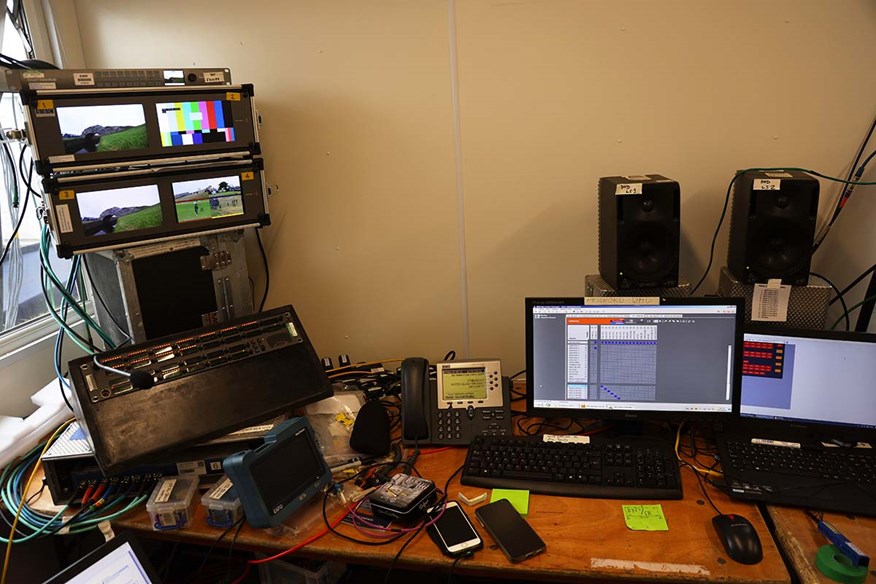
It’s 11.15am and their broadcast started 15 minutes ago but a sense of calm permeates the chummy chats going on off air. A small army of riggers, runners and engineers are now on standby, listening in on headsets and speakers. This week is the first time they have all worked together as a team, but they have been preparing for this since November.
Presenter Mark Chapman is currently presenting the coverage next to the first tee. He has two, sometimes three, people in his ear at one time, but it doesn’t appear to disrupt his flow. Any moment now he will throw to Golf Correspondent Iain Carter who has already messaged in, alerting O’Donoughue that Tyrrell Hatton has another makeable birdie putt at the far end of the course.
Back on the 5th green and another familiar voice Alistair Bruce-Ball (ABB) has just marched into position, ready for Tiger Woods to putt. It’s not uncommon for on-air broadcasters to walk 20 miles on any given day, so it is Melbourne’s job to make sure they are following the right groups and covering the best stories. Yesterday they were on air for the first tee shot at 6.35am. Some commentators didn’t leave until after the final group finished after 10pm.
With one press of a button, Melbourne is now on the talkback intercom, alerting everyone to keep an eye on Padraig Harrington who has just birdied the first two holes. There is so much happening at one time that her eyes are constantly flickering between various screens, some displaying leaderboards, the others showing live coverage from the Open feed. She is on her phone incessantly, messaging and reminding people to take a break so they are not overworked.
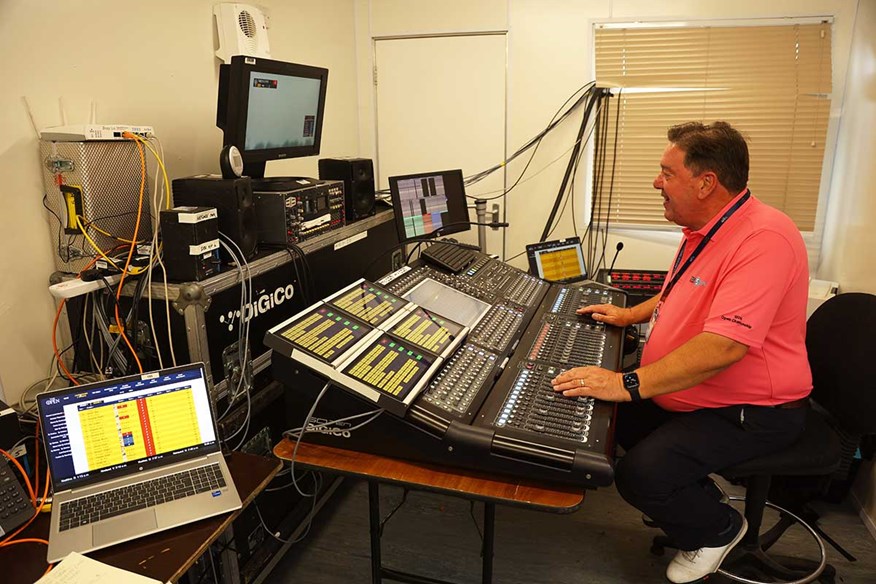
Sitting beside Melbourne is Richard Earle (pictured above), who is at the controls of a large sound mixing board that was driven up from Wimbledon on Monday night. As the Engineering Manager for Radio Broadcasting, he is responsible for mixing the audio, adding effects to the ‘fader’, and making sense of lots of dials and flashing lights.
A quick demonstration shows that he can activate gun mics on every green and fairway, as well as four more hidden in the bunkers on the Old Course. “Bunker 4 is the Road Hole bunker,” says Earle, pointing at a yellow-stickered button. “That lets us hear the conversations between the players and caddies. It’s brilliant insight for the listener and it gives the commentators something to react to. Golf on the radio is all about the description so if we can add the swish of the club, that really enhances the experience, dragging the listener in.”
Under Earle’s desk is a back-up power supply, which he says can keep them on the air for 30 minutes if there is a power outage. They try to cover off every eventuality and even have a separate room next door, known as the ‘off-tube’ commentary position, where they can broadcast from in case of a weather delay. Other studios and booths have also been kitted out elsewhere so they can broadcast from other BBC networks if a major story breaks.
“The idea is that if anything happens or goes wrong, we can very quickly respond to it,” he explains. “My colleague once said, ‘We are not paid for what we do. We’re paid for what we might have to do’.”
His attention is momentarily snapped by Olympic gold medallist Eve Muirhead, who has quietly snuck into the studio to find out who she is commentating on today. This is the first time she’s been part of the 5 Live team at an Open Championship, a fact which feels especially pertinent given the inequality that still exists in sports media and golf in general.
“Diversity is really important to us,” says Melbourne, unprompted. “It shouldn’t just be a male-exclusive club. Having that breadth, warmth and relatability is important. We’ve brought in Eve who a lot of people may not know, but she is a professional curler and a very good golfer. She adds something different, an extra dimension which we need to keep our coverage fresh and entertaining.”
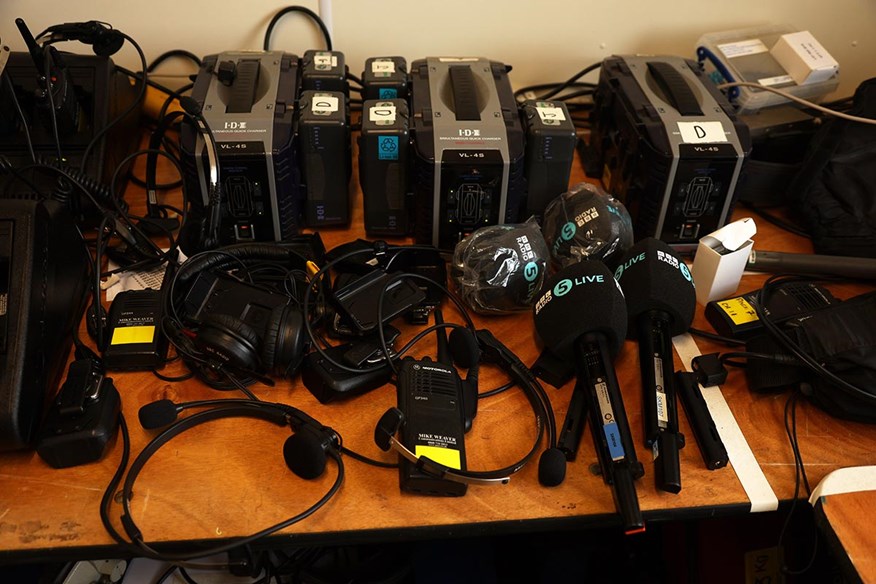
A limited number of radio mics mean all 16 on-course broadcasters go out in pairs, which Pam tries to rotate daily. Many of them are allocated groups for the morning and afternoon tee times the night before, but with the caveat that they may change at the last minute. LET star Lydia Hall and Katherine Downes are two of the roaming reporters on the ground today, dashing between holes and following where the story is.
“I rarely deal in the moment,” says Melbourne. “I’ve got to think two steps ahead because we can’t just go to an ad break or run some nice pictures. We’ve got to keep talking. My job is to make sure the plates keep spinning and we don’t drop anything. We have to be a little bit dynamic.”
Out on the course, trying to get from A to B is proving harder here than any other layout on The Open rota. Bottlenecks are common on several holes, which is making it especially difficult to move inside the ropes without disturbing the players.
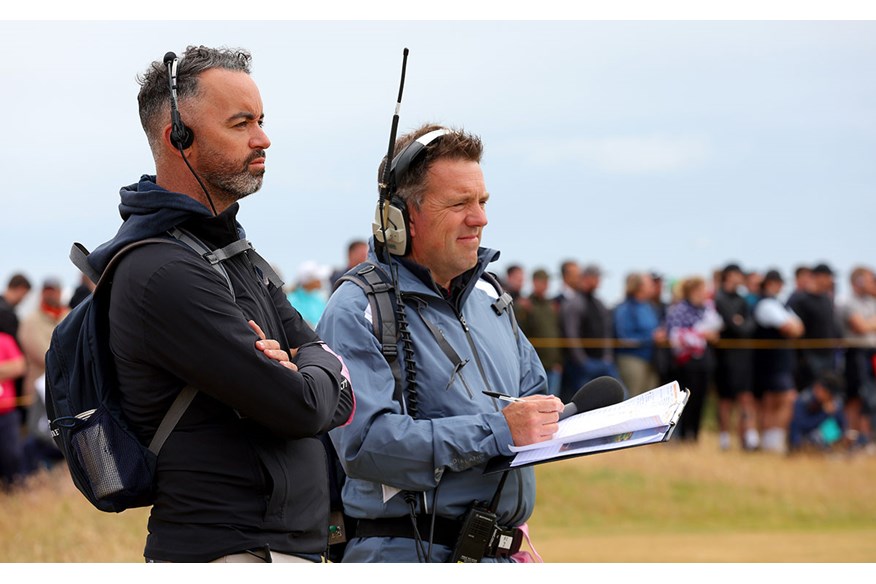
“I’ve forgotten how challenging it is in that regard,” says ABB, who has agreed to let us join him and Zane Scotland for a few holes. “We always try and stay ahead of the groups we are following but you have to be clever where you stand and make sure you’re not standing in someone’s way.
“Two seconds”, he says, before launching into a brief monologue about the state of play and how Viktor Hovland is dressed like an 80’s tennis star. Stefen Edberg and Ivan Lendl are the two names who pop into his head.
Regular 5 Live listeners will know that some of the most enjoyable –and beloved – moments tend to come when they stray off-piste, cutting through the seriousness of what is happening in front of them. Asking inane trivia questions, like golfers and test cricketers sharing the same surname, is one of ABB’s specialties and helps to keep the production light.
He is also one of the most active people in the team’s WhatsApp group, where they are constantly sharing ideas and exchanging contacts to help with booking guests and interviews. They also contribute to the BBC Sport live text by posting pictures of fans and players while they wait for their cue. Sometimes, ABB says, they can be waiting a long time.
“I remember very clearly the final round at Muirfield in 2013. I spent that afternoon walking with Angel Cabrera and Ryan Palmer and I don’t think I commentated on a single shot. I was basically a listener all afternoon, walking in the sunshine watching the golf. Other times you get lucky when someone can come from nowhere and shoot into contention. It really is the luck of the draw.”
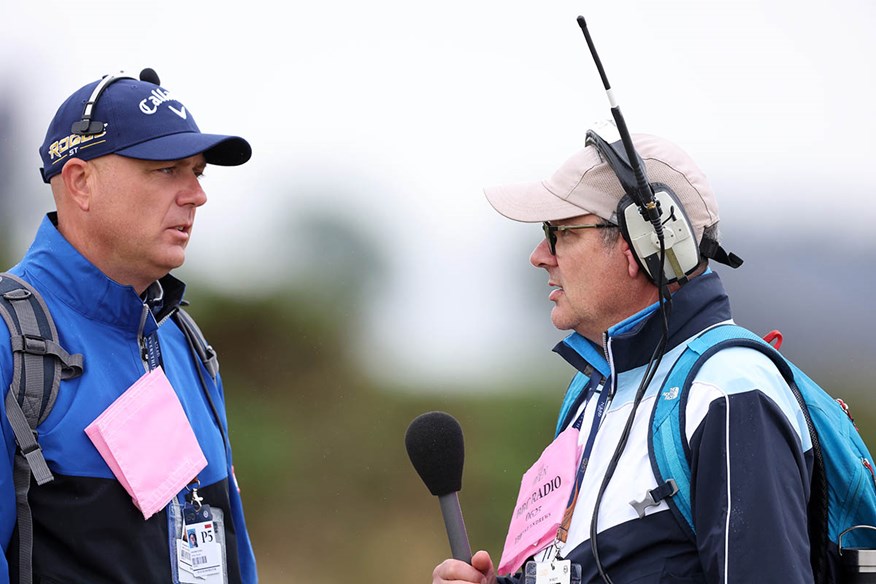
By the time we join Carter up ahead, he has already walked 18 holes and been on three other BBC radio stations in the meantime. He is now following Rory McIlroy’s group in the company of two-time DP World Tour winner Graeme Storm, who has just spotted Gerry McIlroy deep in conversation with Piers Morgan and Mark Austin. A message is sent back to the team in Salford to see if they want to feature them on the programme. “We tried to get Niall Horan on earlier and he ran a mile,” says Storm, chuckling.
Most of what they do is unscripted, but Carter compiles his own fact sheet ahead of every major championship, which he carries with him whenever he is on the course. He makes several photocopies at the start of the week so he can include the yardages and pin placements for each day’s play, plus pertinent stats on every group he is following.
There used to be a phone ban at The Open, but the rules were relaxed several years ago to allow fans – and on-course reporters such as Carter – to keep abreast of what’s happening elsewhere on the site. It allows him to hurriedly research a stat before delivering a softly-spoken account of Rory’s round so far.
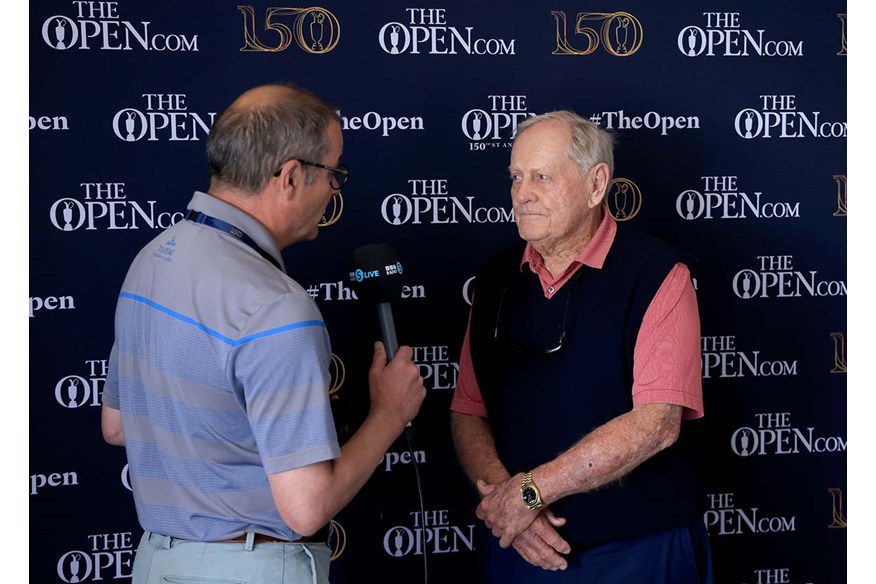
“I’ve done 20 odd Opens as the BBC Correspondent and it never gets lost on me, the sense of privilege and good fortune being able to do this job,” says Carter. “People have often said to me, ‘Do you need someone to carry your bags?’
“It sounds like an enormous cliché, but it doesn’t really get much better for any of us on the 5-Live team, being inside the ropes and covering what I think is the greatest Championship of them all.”
By the time the airwaves go silent from St Andrews on Sunday night, the 5 Live crew will have reached more than 725,000 listeners globally. The adrenaline is keeping them going for now but they are all keen to stress that it is very much a team effort. They will go again tomorrow, watching and talking about golf from early morning to late at night. We can all relate to that.
READ NEXT:
– Everything you need to know about The Open
– Which golf courses will host The Open next?
Join Today’s Golfer for unlimited access to premium content and exclusive rewards!
-
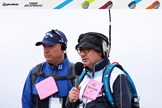 Iain Carter is one of the lead commentators for BBC Radio 5 Live.
Iain Carter is one of the lead commentators for BBC Radio 5 Live.
-
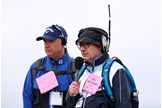 Iain Carter is one of the lead commentators for BBC Radio 5 Live.
Iain Carter is one of the lead commentators for BBC Radio 5 Live.
-
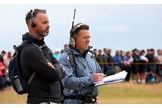 Alister-Bruce Ball commentating on the live action alongside Zane Scotland.
Alister-Bruce Ball commentating on the live action alongside Zane Scotland.
-
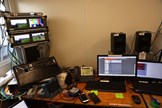 The makeshift BBC production studio at St Andrews.
The makeshift BBC production studio at St Andrews.
-
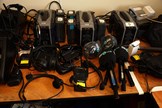 The BBC Radio 5 Live team reached over 725,000 listeners during the 150th Open.
The BBC Radio 5 Live team reached over 725,000 listeners during the 150th Open.
-
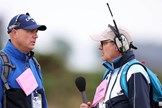 Iain Carter and Graeme Storm were a key part of the BBC Radio 5 Live coverage.
Iain Carter and Graeme Storm were a key part of the BBC Radio 5 Live coverage.
-
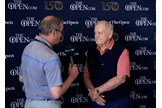 Iain Carter interviewed Jack Nicklaus for BBC 5 Live.
Iain Carter interviewed Jack Nicklaus for BBC 5 Live.
-
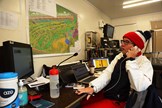 Pam Melbourne is in constant contact with all on-course commentators.
Pam Melbourne is in constant contact with all on-course commentators.
-
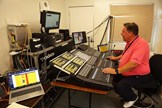 Richard Earle is the Engineering Manager for Radio Broadcasting at the BBC
Richard Earle is the Engineering Manager for Radio Broadcasting at the BBC
